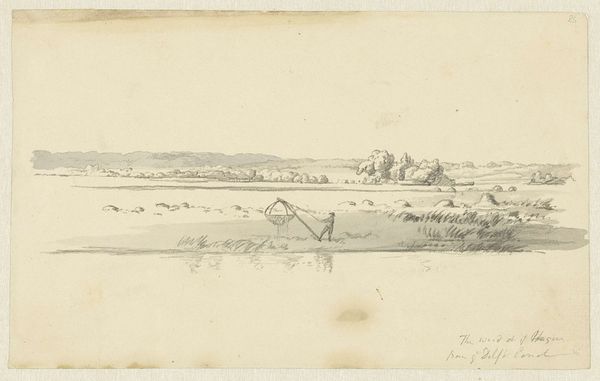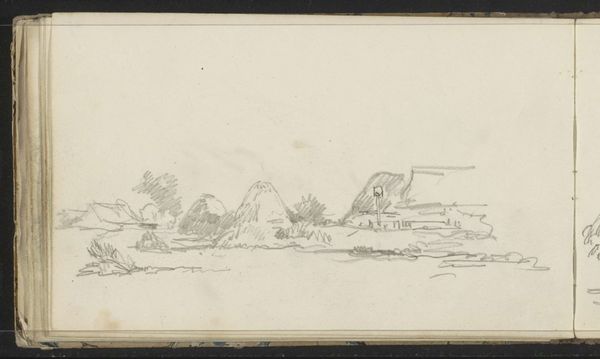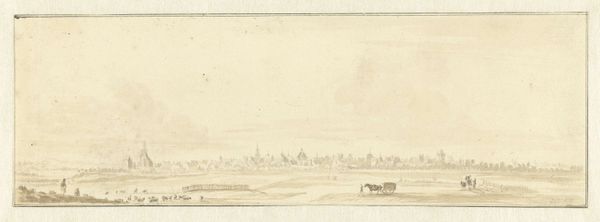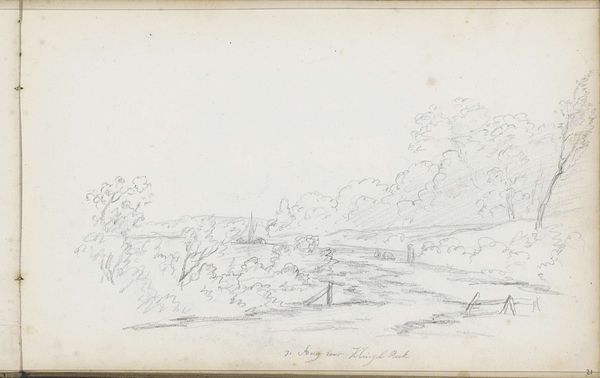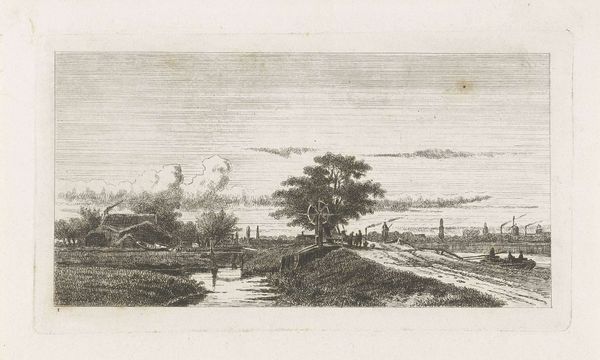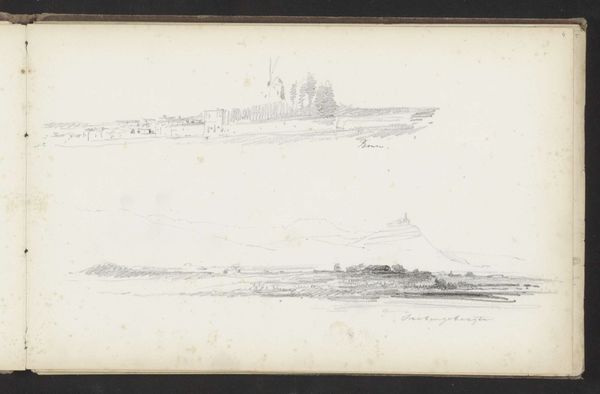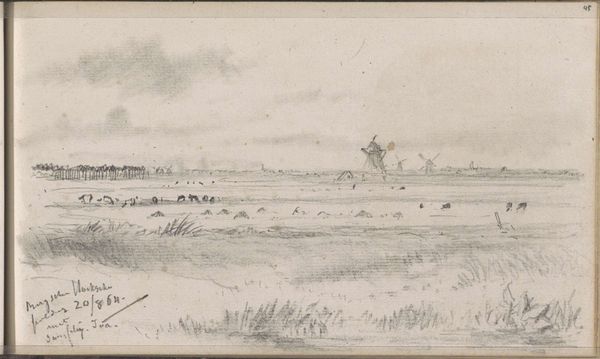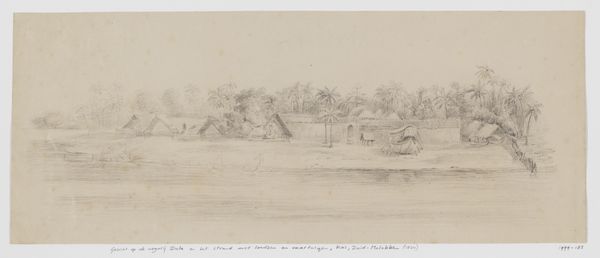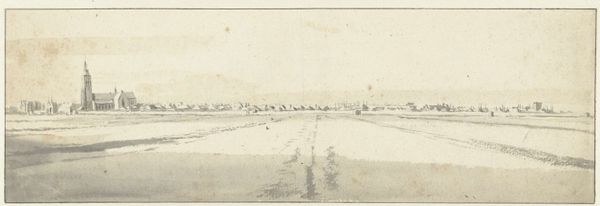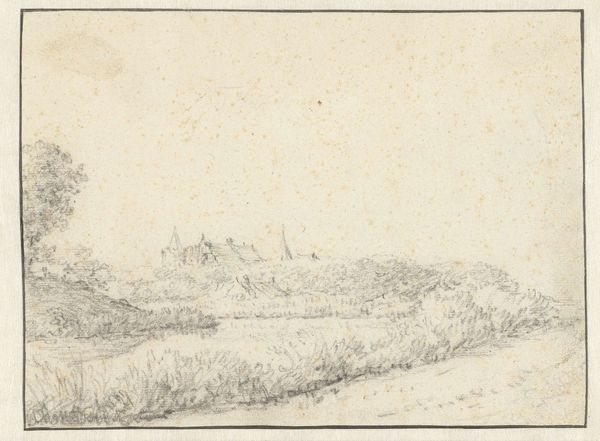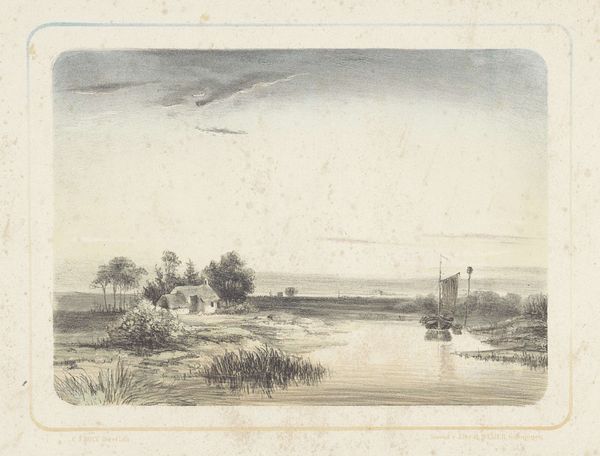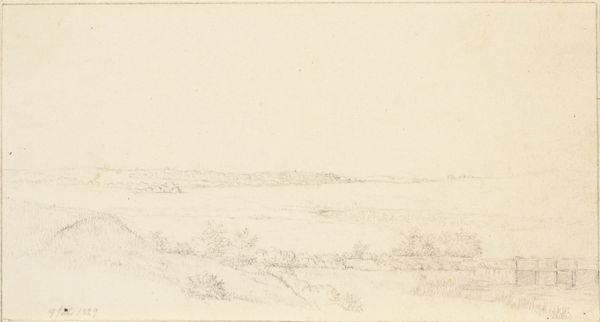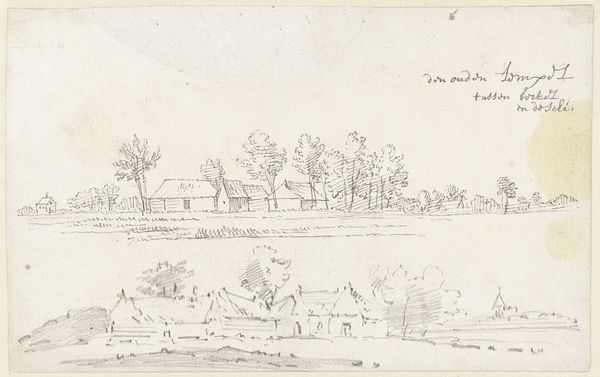
drawing, pen
#
drawing
#
dutch-golden-age
#
pen sketch
#
landscape
#
pen
Dimensions: height 110 mm, width 220 mm
Copyright: Rijks Museum: Open Domain
Curator: Ah, Jan de Beijer's "De grote Ronduyt bij Tiel" from 1758. It’s currently residing here at the Rijksmuseum, rendered in pen and ink. Editor: It’s got such a quiet feeling, doesn't it? Like a whispered secret from a long-ago summer day. I find the building on the left quite charming. Curator: It's the "ronduyt," or redoubt, which was a defensive structure! I’m intrigued by the seeming effortlessness of it—the simplicity with which de Beijer captures a specific time and place. But look closer: that paper probably came from France or Italy. Who was making it, who traded it? The social dimensions of material consumption, no? Editor: Precisely! The availability and transportation of that paper itself is another layer. And it seems funny to render a structure intended to represent defense in something as peaceful and subdued as this ink sketch. The labor in producing the ink, too—crushing the materials, mixing it just so... Curator: It becomes about turning the mundane into something else entirely through vision. How the artist transforms physical stuff with artistic process and intellectual might—it's more about suggestion than precise documentation, though. Those feathery trees, the light almost trembling across the water... Editor: And who was this 'artist'—commissioned or self-directed, producing works for trade or personal pleasure, or some hazy blend of all those conditions? These aren't merely aesthetics, but objects caught in vast economic networks... De Beijer and his rendering become nodes in an exchange of things and representations. Curator: Ultimately, I can't help but feel it asks us to stop, just for a moment, to really look and to see the subtle beauty in the landscape around us. Maybe he was attempting to preserve it against encroaching development or industrial extraction, given what we now know about the region at that time. Editor: True enough! De Beijer offers an elegy to production that anticipates future losses, the raw stuff of making caught between artistic act, cultural expression, and the coming of an end.
Comments
No comments
Be the first to comment and join the conversation on the ultimate creative platform.
